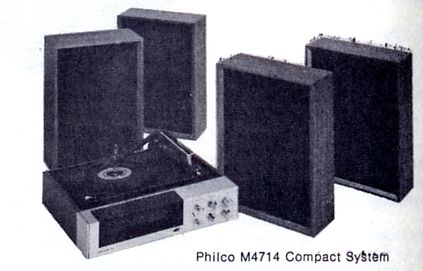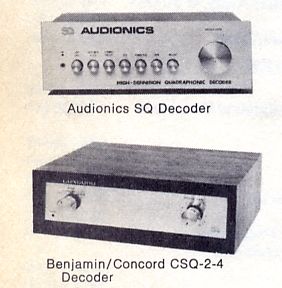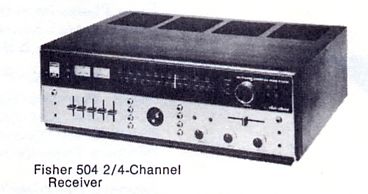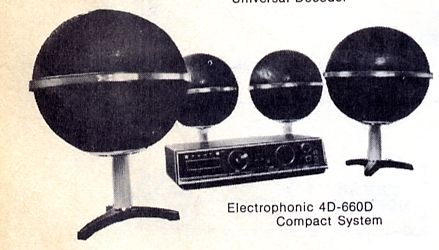Some Vintage Quad Equipment




Quad stereo setups ran the gamut from cheap package deals to separate components costing well over a grand. (You can get a rough comparison between the price of something from the mid-Seventies in contemporary dollars by multiplying the price by four). The liner sleeve from my SQ copy of the Mahavishnu Orchestra’s “Birds of Fire” contained some photos of the assorted options, which you see here.
The Fischer brand is a throwback to the day when the manufacturer for whom the concert hall is named made serious audio products. However, by the mid-Seventies, Fischer stuff was getting a bit cheesy. I saw the receiver pictured here at the Abraham and Strauss audio department, which was located in their Annex building across the street from the main store in Brooklyn. Note the “joystick” balance control on the control panel. You could use it to adjust the relative volume levels of any of the four speakers quite simply, although the control looked like it would break easily. The wood cabinet was standard for audio components in the era before everything was uniform black.
Electrophonic was one of the many makers of “medium-fi” budget setups in both quad and conventional stereo. You’d typically find these in appliance stores, but almost never in serious audio shops, which had a certain snob appeal. Such rigs were popular with kids on budgets, or those who didn’t know serious sound when they heard it. You bought everything in one box – no matching components. The spherical speaker units were an example of the omidirectional style that enjoyed a brief popularity. Supposedly these did not require that you sit directly in line with the tweeters to hear high frequencies.
Philco was one of the makers of “compact” systems in which everything but the speakers was contained in a single unit. Compacts ranged in sound from poor to fairly good, although true audiophiles turned up their noses at anything other than separate components. Most had small speaker systems which had poor bass response, and featured cheap turntables which used what was termed a “ceramic phono cartridge,” that put excessive wear on LPs.
For those of us who already had conventional stereo sets, a variety of “decoders” existed which promised to extract the rear speaker sound from quad recordings, and feed them either through a second amplifier or directly to the loudspeakers. These were used extensively with the SQ format, and would also supposedly create a “simulated” quad sound from conventional stereo recordings.
My friend Russell, who worked in his father’s meat plant and actually had a few bucks to his name, first owned a compact quad system, but later upgraded to a component rig featuring a Pioneer receiver, four large JVC speaker systems, and a Garard turntable. One night I brought over a rare find: a German SQ edition of Pink Floyd’s “Dark Side of the Moon” in SQ, which I found in the Imports bin at the old Alexander’s by Bloomingdales. If there was one album made for quad, we figured, it would be this one. Russell cranked it up, and we all took our positions in the center of the room. What we heard was a real disappointment; the engineers who had re-mixed the album for quad did not take advantage of any of the medium’s potential! Maybe this was one of the reasons for the downfall of quad that rarely gets discussed: few recordings were made that justified it.

0 Comments:
Post a Comment
Subscribe to Post Comments [Atom]
<< Home